-
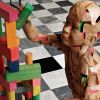 +21 +1
+21 +1Geneticists Are Concerned Transhumanists Will Use CRISPR on Themselves
The biggest debate at the International Summit on Human Genome Editing is where to draw the line between "medical treatment" and "body enhancement." Will transhumanists ruin gene editing for everyone else?
-
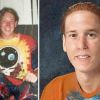 +28 +1
+28 +1Grateful Doe: Unidentified man named as Jason Callahan 20 years after death
A car crash victim who became known as Grateful Doe because of two Grateful Dead ticket stubs in his pocket has been identified more than 20 years after he was killed, authorities said on Thursday. DNA evidence confirmed that the man whose identity remained a mystery for two decades is Jason Callahan of Myrtle Beach, South Carolina, said Arkuie Williams, a spokesman for the Virginia medical examiner’s office.
-
 +23 +1
+23 +1Your Face Is Covered in Mites, and They’re Full of Secrets
When you look in the mirror, you’re not just looking at you—you’re looking at a whole mess of face mites. Yeah, you’ve got ‘em. Guaranteed. The little arachnids have a fondness for your skin, shoving their tubular bodies down your hair follicles, feeding on things like oil or skin cells or even bacteria. The good news is, they don’t do you any harm. The better news is, they’ve got fascinating secrets to tell about your ancestry.
-
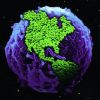 +58 +1
+58 +1Startling new finding: 600 million years ago, a biological mishap changed everything
If life is effectively an endless series of photocopies, as DNA is transcribed and passed on from one being to the next, then evolution is the high-stakes game of waiting for the copier to get it wrong. Too wrong, and you’ll live burdened by a maladaptive mutation or genetic disorder. Worse, you might never live at all. But if the flaw is wrong in exactly the right way, the incredible can happen: disease resistance, sharper eyesight, swifter feet, big brains, better beaks for Darwin’s finches.
-
 +40 +1
+40 +1Scientists Capture Crispr’s Gene-Cutting in Action
For all the furious hype around the gene-editing tool Crispr/Cas9, no one has ever really seen it in action. Like really seen it. How the protein Cas9 unzips a strand of DNA, how it slips in the molecule that guides it to a target—and finally, how it goes snip snip on the DNA. The power of Crispr/Cas9 is its ability to do this all so precisely and reliably. How can you see something as small as a protein anyway? For decades, that has meant coaxing proteins to grow into crystal structures.
-
 +44 +1
+44 +1Intelligent people are genetically predisposed to be healthier, experts find
Some people really do win the genetic lottery. For the first time, scientists have shown that intelligence is linked to good health, so those blessed with brains are also less likely to become sick, develop disease or die early. The reason is down to genes. An international team, led by the University of Edinburgh, have discovered that the same gene variants which make people smart, also protect them against illness.
-
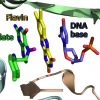 +21 +1
+21 +1Chemists uncover how key agent allows diseases to reproduce
Humans have been successful at treating a host of diseases. Yet some continue to elude medicine's best attempts. Tuberculosis killed 15 percent of the 9.6 million people who contracted it worldwide in 2014. Typhus has flared periodically throughout history, with deadly consequences. Rocky Mountain spotted fever is a tick-borne threat in North and South America. Pneumonia is common everywhere.
-
 +48 +1
+48 +1DNA may determine if you’re an early bird or night owl
Being a morning person could be in your genes. Certain genetic variations occur more frequently in people who self-identify as having an early-to-bed, early-to-rise lifestyle, a study of DNA from nearly 89,000 people has found. Researchers found 15 different spots in the genetic script that was likely to vary between morning people and self-described evening people. Seven of these genetic swaps occurred near genes involved in regulating a person’s...
-
 +32 +1
+32 +1The Link Between Neanderthal DNA and Depression Risk
Modern humans originated in Africa, and started spreading around the world about 60,000 years ago. As they entered Asia and Europe, they encountered other groups of ancient humans that had already settled in these regions, such as Neanderthals. And sometimes, when these groups met, they had sex. We know about these prehistoric liaisons because they left permanent marks on our genome. Even though Neanderthals are now extinct...
-
 +38 +1
+38 +1DNA evidence shows that salmon hatcheries cause substantial, rapid genetic changes
A new study on steelhead trout in Oregon offers genetic evidence that wild and hatchery fish are different at the DNA level, and that they can become different with surprising speed. The research, published today in Nature Communications, found that after one generation of hatchery culture, the offspring of wild fish and first-generation hatchery fish differed in the activity of more than 700 genes. A single generation of...
-
 +33 +1
+33 +1400,000-year-old fossils from Spain provide earliest genetic evidence of Neandertals
Previous analyses of the hominins from Sima de los Huesos in 2013 showed that their maternally inherited mitochondrial DNA was distantly related to Denisovans, extinct relatives of Neandertals in Asia. This was unexpected since their skeletal remains carry Neandertal-derived features. Researchers of the Max Planck Institute for Evolutionary Anthropology in Leipzig, Germany, have since worked on sequencing nuclear DNA from fossils from the cave, a challenging...
-
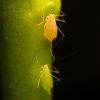 +19 +1
+19 +1Genes that jump species: does this shake the tree of life?
Genes that leap from one species to another are more common than we thought. Does this shake up the tree of life? Fay-Wei Li stepped out of his car and looked around. There was not much to see aside from an old wooden fence and a soggy ditch strewn with roadside detritus. Could this really be the spot? A biologist at Duke University, Li had driven seven hours from North Carolina to these exact coordinates in Florida in search of hornworts: the living descendants of...
-
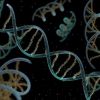 +29 +1
+29 +1More Ancient Viruses Lay Dormant In Human DNA Than Previously Thought
Hundreds of thousands of years ago, ancient viruses attacked our ancestors. Somehow, remnants of these viruses found its way into the human DNA and have been passed down from generation to generation.
-
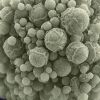 +33 +1
+33 +1Synthetic Bug Given 'Fewest Genes'
Scientists take another step in their quest to understand the bare genetic essentials of life, producing a laboratory bacterium that has only 473 genes - fewer than any independent bug in nature.
-
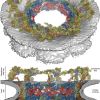 +21 +1
+21 +1Biochemists solve the structure of cell's DNA gatekeeper
Caltech scientists have produced the most detailed map yet of the massive protein machine that controls access to the DNA-containing heart of the cell.
-
 +22 +1
+22 +1Scientists Talk Privately About Creating a Synthetic Human Genome
Scientists are now contemplating the fabrication of a human genome, meaning they would use chemicals to manufacture all the DNA contained in human chromosomes. The prospect is spurring both intrigue and concern in the life sciences community because it might be possible, such as through cloning, to use a synthetic genome to create human beings without biological parents.
-
 +37 +1
+37 +1An HIV cure just got one step closer
Scientists have managed to remove DNA of the HIV virus from living tissue for the first time in a breakthrough that could lead to an outright cure. At the moment, treating the disease involves the use of drugs that suppress levels of the virus so the body’s immune system can cope. Now researchers in the US have revealed they used gene-editing technology to remove DNA of the commonest HIV-1 strain from several organs of infected mice and rats.
-
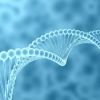 +25 +1
+25 +1Geneticists announce plans to create an artificial human genome
A team of scientists including Harvard University geneticist George Church and Jef D. Boeke, the founding director of the Institute for Systems Genetics at New York University’s Langone Medical Center, have announced a 10-year plan to create a synthetic human genome. Their proposal, which was outlined Thursday in the journal Science, involves developing their own lab-made version of the entire human genetic code with the hope that their efforts may one day lead to important medical breakthroughs, according to NPR and the New York Times.
-
 +2 +1
+2 +1New DNA technology confirms Aboriginal people as first Australians
A new look at ancient bones with the latest DNA technology has confirmed Aboriginal Australians as the continent's first people. Researchers say the findings overturn a 2001 paper that argued the oldest known Australian human remains found near Lake Mungo in New South Wales were from an extinct lineage of modern humans that occupied the continent before Aboriginal Australians. This claim was based on mitochondrial DNA extracted from Mungo Man's 40,000-year-old fossilised remains by a...
-
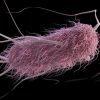 +38 +1
+38 +1Scientists Turn Bacteria Into Living Hard Drives
By feeding strings of human-written data into colonies of bacteria, scientists have discovered a way to turn tiny cells into living, squirming hard drives. A team of Harvard scientists led by geneticist Seth Shipman has just developed a fascinating way to write chunks information into the genetic code of living, growing bacterial cells. It could be the code for a computer program or the lines of a poem. Either way, these living memory sticks can pass this data onto their descendants, and scientists can later read that data by genotyping the bacteria.
Submit a link
Start a discussion




















